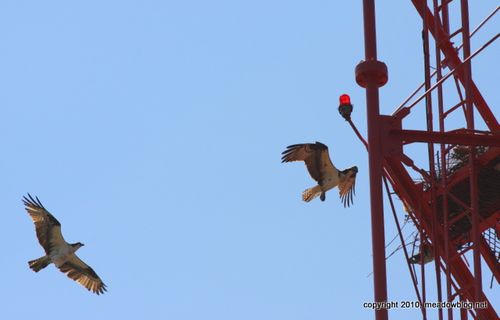The Meadowlands Commission's Jim Wright wrote this column for The South Bergenite, published today.
One Tuesday earlier this month, several large hawks put on quite a display above the Saw Mill Creek mud flats near the New Jersey Meadowlands Commission’s
While two of the large black-and white hawks gathered sticks and tried to build a nest high atop one of the erector-set-like stanchions for high-tension power lines, five others glided and hovered as they hunted above the mud flats’ shallow waters.
If there was ever a doubt that ospreys have made a comeback in the Meadowlands, the scene at DeKorte put those thoughts to rest. The ospreys are back – with a nest that brought two offspring in
The Meadowlands has had several terrific environmental rebounds in recent years, but to me one of the most remarkable – and most visible – is the return of the osprey.

When the Meadowlands Commission was formed four decades, ospreys were headed the way of the dodo and passenger pigeon: toward extinction. The birds were suffering from a one-two punch from humans.
“The osprey, like the bald eagle and peregrine falcon, was greatly affected by the pesticide known as DDT in the 1960s and '70s,” says NJMC Naturalist Mike Newhouse. “They haven’t been breeding in the Meadowlands since then until now.”
The other problem was that the
With the creation of the NJMC in 1969 and the federal Clean Water Act a few years later to crack down on polluters, the river began to turn the corner. Now there are so many fish in the
Newhouse says that ospreys are amazing athletes: “They scan the water for fish, then hit the water and catch the fish with their talons. Their reversible outer toe allows them to hold fish head-first while flying to perch somewhere to eat.”
According to Newhouse, “The osprey is one of the most widely distributed raptors in the world and is found on every continent except
And now, once again, in the Meadowlands along the

The ospreys is this picture look like the Thunderbird’s I’ve seen depicted in drawings